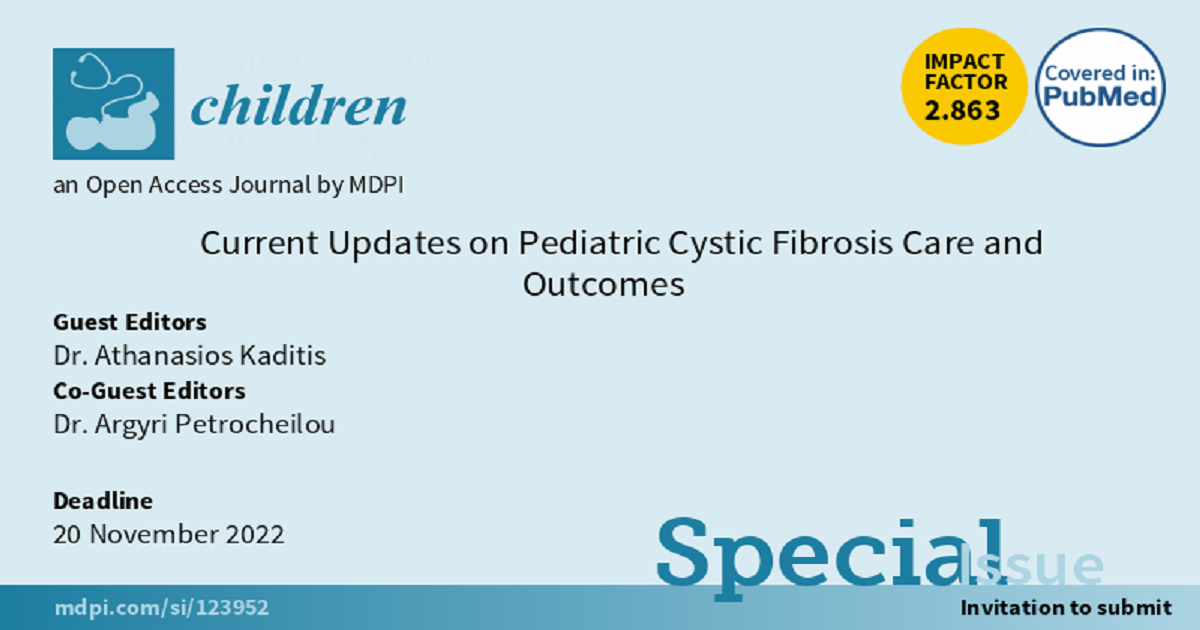Current Updates on Pediatric Cystic Fibrosis Care and Outcomes
A special issue of Children (ISSN 2227-9067). This special issue belongs to the section "Pediatric Pulmonary and Sleep Medicine".
Deadline for manuscript submissions: closed (20 November 2022) | Viewed by 2458

Special Issue Editors
Interests: sleep apnea; sleep-disordered breathing; cystic fibrosis; bronchiolitis; spirometry
Special Issue Information
Dear Colleagues,
Tremendous progress has been achieved in the diagnosis and management of cystic fibrosis (CF) over the last few years. Highly effective CFTR modulators have become available, “adding tomorrows” to the lives of people with CF. Patients who are not eligible for modulators may benefit from the development of new CFTR function restoring therapies. Newborn screening and early diagnosis of the disease in the newborn period remains an area of intensive research. Lung infections and inflammation, CF-related diabetes, nutrition, hepatic and gastrointestinal disorders, and lung transplantation for advanced lung disease are additional exciting areas of CF research. The purpose of this Special Issue is to accommodate review articles describing the path to a cure for every individual with CF. We hope that contributors will cover as many topics as possible, reviewing the extensive body of published and ongoing research.
Dr. Athanasios Kaditis
Dr. Argyri Petrocheilou
Guest Editors
Manuscript Submission Information
Manuscripts should be submitted online at www.mdpi.com by registering and logging in to this website. Once you are registered, click here to go to the submission form. Manuscripts can be submitted until the deadline. All submissions that pass pre-check are peer-reviewed. Accepted papers will be published continuously in the journal (as soon as accepted) and will be listed together on the special issue website. Research articles, review articles as well as short communications are invited. For planned papers, a title and short abstract (about 100 words) can be sent to the Editorial Office for announcement on this website.
Submitted manuscripts should not have been published previously, nor be under consideration for publication elsewhere (except conference proceedings papers). All manuscripts are thoroughly refereed through a single-blind peer-review process. A guide for authors and other relevant information for submission of manuscripts is available on the Instructions for Authors page. Children is an international peer-reviewed open access monthly journal published by MDPI.
Please visit the Instructions for Authors page before submitting a manuscript. The Article Processing Charge (APC) for publication in this open access journal is 2400 CHF (Swiss Francs). Submitted papers should be well formatted and use good English. Authors may use MDPI's English editing service prior to publication or during author revisions.
Keywords
- advanced lung disease
- CFTR modulators
- cystic fibrosis
- cystic fibrosis related diabetes
- lung transplantation
- newborn screening
- pulmonary exacerbations







